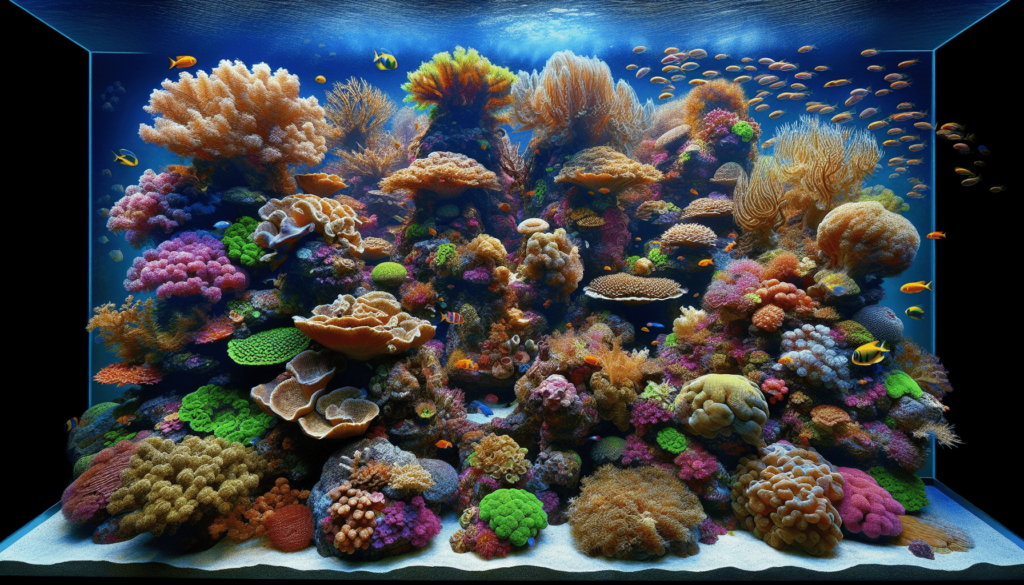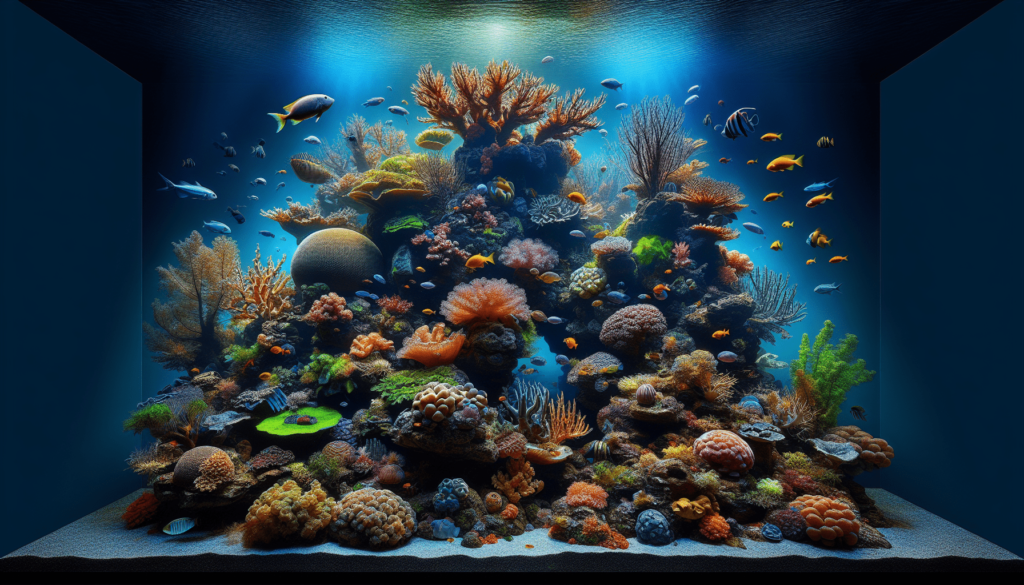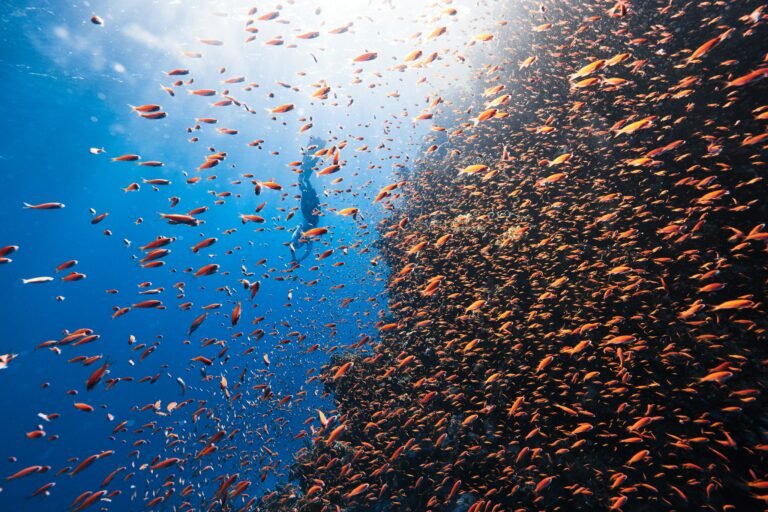What do you think it takes to create a stunning underwater world, right in your own home?
Overview
Imagine peering into a glass box filled with beautiful corals, colorful fish, and other fascinating sea creatures. This is what you can achieve with marine aquarium aquascaping. It’s a way to design and set up marine aquariums so they look like miniature versions of the ocean. This activity isn’t just fun; it lets you explore the beauty of the sea without leaving your house.
The Art of Marine Aquarium Aquascaping
Marine aquarium aquascaping is not only about keeping fish; it involves arranging rocks, corals, plants, and other elements to create a harmonious and aesthetically pleasing underwater scene. People often say it’s like gardening underwater, but with sea creatures.
The Historical Context
Long ago, people kept aquariums mostly to study fish or for practical purposes. It wasn’t until the 20th century that people started designing aquariums for their beauty. Today, aquascaping has grown into a hobby that people all over the world enjoy. They share tips, hold contests, and even create aquascaping clubs.
Current Trends
These days, a lot of things are changing in marine aquarium aquascaping. People are now focusing more on creating natural-looking environments. This trend is called the “Nature Aquarium” style. Instead of just randomly placing elements, every rock, coral, and plant is carefully arranged. This makes the aquarium look just like a slice of the ocean.
Key Concepts and Definitions
Before we go any further, let’s quickly understand some important terms:
- Live Rock: These are rocks taken from the ocean that are full of beneficial bacteria and small critters. They help clean the water and provide a home for fish.
- Corals: These are tiny sea creatures that form beautiful, colorful structures. They are a big part of marine aquarium aquascaping.
- Filtration System: This is an important part of the aquarium that helps keep the water clean.

Detailed Exploration
Creating a marine aquarium involves several steps. Let’s break them down into easier parts so you understand what goes into this fascinating hobby.
Setting Up Your Aquarium
First, you’ll need a tank. Beginners often start with smaller tanks, but keep in mind that larger tanks are actually easier to maintain because they have more stable water conditions.
| Choosing a Tank | Size |
|---|---|
| Small Tanks | Less than 30 gallons |
| Medium Tanks | 30-50 gallons |
| Large Tanks | More than 50 gallons |
Arranging the Live Rock and Corals
Creating the right layout for your live rock and corals is like painting a picture. You’ll want to make sure there are plenty of hiding spots for fish and enough open space for them to swim.
Here are some tips:
- Start with the Rocks: Position the larger rocks first. Think about how they naturally look underwater.
- Add Corals: Place the corals where they can get enough light.
- Create Depth: Arrange elements to create a sense of depth. This makes the aquarium look more like a real underwater scene.
Maintaining the Aquarium
Keeping a marine aquarium is a lot of responsibility. You need to make sure that water conditions are just right for your sea creatures to thrive.
Here’s a simple table to help you remember what to check:
| Task | Frequency |
|---|---|
| Check Water Temperature | Daily |
| Feed Fish | Daily |
| Clean the Tank | Weekly |
| Test Water Quality | Weekly |
Example 1: The Reef Tank
A reef tank is a type of marine aquarium that focuses on corals and other invertebrates. For instance, Emily’s Reef Tank is filled with fantastic corals, some shrimp, and a few clownfish. She used a 50-gallon tank and carefully arranged live rocks to create hiding spots for her shrimp and swimming spaces for her fish.
Emily checks her water quality every week and feeds her tank inhabitants daily. The result is a vibrant, living artwork that mesmerizes everyone who sees it.

Example 2: The Fish-Only Tank
Another example is Jake’s Fish-Only Tank. Jake wanted to focus on colorful fish without worrying too much about corals. He picked a 40-gallon tank and filled it with live rock to create interest. He added fish like tangs and clownfish that are known for their bright colors.
Jake doesn’t have to worry as much about lighting as Emily because fish don’t need special light like corals do. He checks his water temperature and feeds his fish daily, keeping his tank clean by changing part of the water every week.
Comparison of Different Perspectives
Different people have different ideas about the best way to aquascape a marine aquarium. Some argue that focusing on natural beauty is the way to go, creating scenes that look like they were taken right from the ocean. Others are more interested in highlighting rare or colorful fish, even if the aquarium doesn’t look entirely natural.
Natural-Style Layouts
Natural styles try to mimic ocean environments as closely as possible. People who prefer this style often use live rock and real corals and carefully plan each element’s placement.
Artificial-Style Layouts
On the other hand, some people enjoy creating aquariums filled with brightly colored artificial decorations. These might not look like the ocean, but they can be eye-catching and fun.

Impact Assessment
Which style is better? Each has its impact and benefits:
Natural-Style Impact
- Pros: Looks more like a real part of the ocean. Helps to maintain a stable environment for fish and corals.
- Cons: Can be more challenging to set up and maintain.
Artificial-Style Impact
- Pros: Easier to set up and maintain. Usually less expensive.
- Cons: Does not look as realistic. Might not provide the best environment for some fish and corals.
Future Directions and Implications
What does the future hold for marine aquarium aquascaping? People are increasingly looking for sustainable ways to enjoy this hobby, such as using eco-friendly materials and supporting organizations that protect the oceans.
Predictions
- Rising Popularity: More people will become interested in aquascaping as new technologies make it easier and more affordable.
- Sustainable Practices: There will be a larger focus on sustainability, such as using farmed corals instead of those taken from the ocean.
Implications
These changes can have a big impact. As more people become involved in aquascaping, there will be greater awareness of ocean conservation. Hobbyists who know how to care for marine life can help spread the message about protecting our oceans.

Conclusion
Recap
So, what have we learned about marine aquarium aquascaping? It’s a beautiful, complex hobby that involves creating underwater scenes with rocks, corals, and fish. Whether you opt for a natural style or an artificial one, you’ll need to take good care of your aquarium to keep it looking its best.
Final Thought
If building your miniature ocean interests you, why not start exploring marine aquarium aquascaping? You could be amazed at the wonderful, colorful world you can create right in your own home.
Engagement
What do you think would be more fun: creating a natural-looking underwater world or a colorful, artificial one? Don’t forget to share your thoughts and maybe ask your parents or friends what they think too!
Credible Sources
- “The Reef Aquarium: A Comprehensive Guide to the Identification and Care of Tropical Marine Invertebrates” by Charles Delbeek and Julian Sprung
- “Marine Fish and Reef USA Magazine”
- LiveAquaria.com



